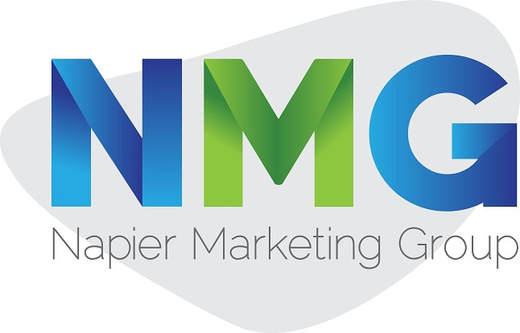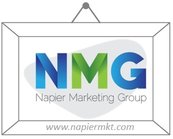40 FACTS about the psychology of color to boost website conversions - infographic
How To Use Colors For Your Marketing Strategy - Infographic
Throughout the history of our species, colors have played a very important role. For our caveman ancestors, colors would often mean the difference between life and death, since differentiating between them helped them identify food that wasn’t poisonous. In the ancient and medieval times, colors were often used to set a difference between various social classes. For example, the color purple was reserved only for kings and gentry, and any commoner caught using it would be severely punished.
Psychologists have long studied the phenomenon of colors and their influence on our mood and behavior. Marketing specialists have taken a few hints from them and using the science of colors in order to hit customer’s sweet spot. Today, we don’t use them just for physical retail, but online as well, and you’ll see many web design companies emphasizing the proper utilization of nuances.
How Important is Color?
For starters, consider the fact that customers take an average time of 90 seconds for product assessment. Between 62% and 90% of this assessment is based on the color used. When it comes to branding,60% of product acceptance or rejection is based on color alone, and colors make up for 80% of brand recognition. Although it may seem ridiculous, 84.7% of customers state color as their primary reason for buying a product, while two-thirds of customers won’t buy an appliance if it has an unappealing color!
Understanding Your Demographic
Knowing your customers is the first step to a successful marketing campaign. We can roughly divide consumers into three categories based on spending habits: impulsive buyers, shoppers on a budget, and traditional buyers. Impulsive buyers prefer products that are drenched in colors that evoke a sense of exclusivity such as royal blue, orange and black. Shoppers on a budget go for colors that convey security and tradition such as navy blue and teal. Traditional buyers prefer lighter and warmer colors such as pink, rose, and sky-blue because of the soothing effect they have on our eyes.
Boost Your Conversion Rates Now
Using the right color has often meant the difference between success and failure for many businesses. The most notable example has to be Heinz ketchup packaging. A few years ago, the marketing team from Heinz wanted to do a small experiment with the color scheme on the packaging. Heinz was known and well recognized for its red color, but the team made a calculated risk and changed the color to green. What they saw over seven months of their test period was an astronomical rise in sales of almost 23 million dollars in value!
When it comes to call-to-action buttons, most users prefer red, green and orange colors. However, be careful since those colors have to fit in the overall website color scheme. For example, VegasSlotsOnline.com had a red call-to-action button, but it didn’t fit into the overall look of the website. Once they changed it to yellow, they saw a conversion rate increase of whopping 175%.
All in all, the importance of colors in your marketing campaign shouldn’t ever be neglected. Make sure to know your demographic, their needs and adjust the design accordingly. The success will come on its own. For more facts and stats about color psychology in branding and web design, check out the infographic below by DesignAdvisor.
Psychologists have long studied the phenomenon of colors and their influence on our mood and behavior. Marketing specialists have taken a few hints from them and using the science of colors in order to hit customer’s sweet spot. Today, we don’t use them just for physical retail, but online as well, and you’ll see many web design companies emphasizing the proper utilization of nuances.
How Important is Color?
For starters, consider the fact that customers take an average time of 90 seconds for product assessment. Between 62% and 90% of this assessment is based on the color used. When it comes to branding,60% of product acceptance or rejection is based on color alone, and colors make up for 80% of brand recognition. Although it may seem ridiculous, 84.7% of customers state color as their primary reason for buying a product, while two-thirds of customers won’t buy an appliance if it has an unappealing color!
Understanding Your Demographic
Knowing your customers is the first step to a successful marketing campaign. We can roughly divide consumers into three categories based on spending habits: impulsive buyers, shoppers on a budget, and traditional buyers. Impulsive buyers prefer products that are drenched in colors that evoke a sense of exclusivity such as royal blue, orange and black. Shoppers on a budget go for colors that convey security and tradition such as navy blue and teal. Traditional buyers prefer lighter and warmer colors such as pink, rose, and sky-blue because of the soothing effect they have on our eyes.
Boost Your Conversion Rates Now
Using the right color has often meant the difference between success and failure for many businesses. The most notable example has to be Heinz ketchup packaging. A few years ago, the marketing team from Heinz wanted to do a small experiment with the color scheme on the packaging. Heinz was known and well recognized for its red color, but the team made a calculated risk and changed the color to green. What they saw over seven months of their test period was an astronomical rise in sales of almost 23 million dollars in value!
When it comes to call-to-action buttons, most users prefer red, green and orange colors. However, be careful since those colors have to fit in the overall website color scheme. For example, VegasSlotsOnline.com had a red call-to-action button, but it didn’t fit into the overall look of the website. Once they changed it to yellow, they saw a conversion rate increase of whopping 175%.
All in all, the importance of colors in your marketing campaign shouldn’t ever be neglected. Make sure to know your demographic, their needs and adjust the design accordingly. The success will come on its own. For more facts and stats about color psychology in branding and web design, check out the infographic below by DesignAdvisor.
Now that we’ve shown the scope of color’s influence on consumer behavior, here are some points to consider when putting color based website conversion tactics into practice:
So there you have it, some helpful tips for harnessing the power of color psychology for your business. Now get out there and boost those conversion rates!
- Identify your target audience – Is your product/service marketed primarily toward a particular demographic? Maybe you’re targeting men, women, children or perhaps customers from a certain part of the world? This is a major factor to consider when choosing a palette for your website. Numerous studies have narrowed down the preferred hues of different genders and age groups, taking some guesswork out of the selection process. Colors can also carry different meanings in different cultures. Pay attention to any regional color symbolism to avoid unintentionally alienating your target audience. The color purple for example, often a mark of royalty and wealth, has a starkly different meaning in Brazil and Thailand where it is considered the color of mourning!
- Don’t forget the brand – A website is a major component in your overall business strategy, but a component nonetheless. If you’re building a web presence for an already existing brand, the website’s color scheme will need to match the colors present in the logo and other visual identifiers. Alternatively, if you’re designing a website for a new business, take the opportunity to incorporate the web design into a broader branding strategy from the get-go.
- Make those CTA buttons stand out – Much has been said on the importance of call to action buttons, and as the infographic mentions, bright primary color are your friend in this case. Studies show a distinct correlation between call to action button visibility and rising conversion rates. The message is clear – utilize colors to boost visibility and differentiate CTAs from other elements of your website.
- When in doubt – test it out – At the end of the day, no amount of color psychology can give you an exact formula when choosing colors for your website. Narrow your choices down and then do some A/B testingto find out in practice what kind of design does and does not work for your audiences. Case studies show that this sort of testing can lead to some impressive conversion rate increases, such as this monumental 250% rise seen by Susty Party. It is important to remember that A/B testing is not a cookie cutter approach and changes that work on one website are not guaranteed to result in successful conversions in another. Thorough research is a must in order for A/B testing to fulfill its full potential as an incredibly useful web design tool.
- Don’t go overboard – It’s easy to get excited about all the ways in which different colors can be used as an asset in web design, but curb your enthusiasm! More isn’t always better. In fact, a popular rule of thumb in design is to try and stick to just three different colors, expanding your palette to different shades of the main three if necessary. Underestimating the value of white is another common mistake – it’s a great way to provide contrast, declutter and tie your design together. Use it!
- The more you know… – At this point, it should be glaringly obvious why, when it comes to designing a web presence for your business, color psychology plays such an impactful role. However, you might be wondering why a business owner should even concern themselves with the nitty-gritty of topics such as the use of color psychology in marketing, or ponder the aesthetic judgment of their website’s visitors. Isn’t that a web designer’s job? Absolutely, but arming yourself with a broad and comprehensive understanding of what a successful web presentation entails will allow you to aid in steering those in charge of creating one for you in the right direction. A web designer’s primary concern is creating a cohesive and visually appealing final product but as we’ve shown, color and other design elements are much more than that – they hold the key to successful conversions. Ultimately, no one understands your business better than yourself so it is in your best interest to be informed and educated in order to provide useful input during the design process and be able to more accurately judge the outcome.
- Choose the right designer for you – Ultimately, hiring the right people for the job is of the essence. Working with top web design companies means collaborating with a team of people who understand the broader implications of web design and are able to seamlessly combine visual appeal with high conversion rates. Aside from designing your website, these companies are often a one-stop shop providing web development, branding, logo design, digital strategy, and SEO services.
So there you have it, some helpful tips for harnessing the power of color psychology for your business. Now get out there and boost those conversion rates!




